Card
Games
Properly
Explained
Card
Games
Properly
Explained
Poker, Canasta, Cribbage, Gin Rummy,
Whist and Much More
Arnold Marks

Skyhorse Publishing
Copyright Constable & Robinson 2010
All Rights Reserved. No part of this book may be reproduced
in any manner without the express written consent of the publisher,
except in the case of brief excerpts in critical reviews or articles.
All inquiries should be addressed to Skyhorse Publishing,
555 Eighth Avenue, Suite 903, New York, NY 10018.
Skyhorse Publishing books may be purchased in bulk at special
discounts for sales promotion, corporate gifts, fund-raising,
or educational purposes. Special editions can also be created to specifications.
For details, contact the Special Sales Department,
Skyhorse Publishing, 555 Eighth Avenue, Suite 903,
New York, NY 10018 or .
www.skyhorsepublishing.com
10 9 8 7 6 5 4 3 2 1
Library of Congress Cataloging-in-Publication Data
Marks, Arnold.
Card games properly explained : poker, canasta, cribbage,
gin rummy, whist, and much more/ Arnold Marks.
p. cm.
ISBN 978-1-61608-145-4 (pb : alk. paper)
1. Card games. I. Title.
GV1233.M26 2010
795.4--dc22
2010008838
Printed in China
Contents
Introduction
G AMES using playing cards have evolved over many centuries and in many countries. There are accounts of being used in Egypt, China, India and by the Romans who came with Caesar to Britain. In all probability, the only reason those living in the Stone Age didnt play cards was because of the difficulty in shuffling the stones!
All card games have one feature in common luck and it isnt difficult to see why. Put two people in different rooms, each with a pack of cards, tell them to mix the cards thoroughly and take the top thirteen cards (a quarter) off the pack. The odds against the top thirteen in one room being the same as the top thirteen in the other room are in excess of 620,000,000,000 to 1.
Whereas luck is apportioned between everybody in shares affected by the whims of the Goddess of Fate, the amount of skill each person displays has an influence which is just as important to the chances of winning. This book will tell you not only how specific card games should be played according to their rules, it will also comment on those areas of each game in which skill can be exercised to a players advantage. If skill cannot be used in a game, i.e. if the game is 100 per cent chance, you will not find it in this book.
As you go through the book, you may find a game described which has some differences from the way you remember having played it in the past. This is because there are very few games where the rules have been codified completely and accepted universally. Local, regional and national differences abound in the rules of many card games so, in order to avoid having to write a series of volumes, I have attempted to limit my descriptions to the fewest possible variations of each game. I have also omitted some games which are known to very few. There is little point in being the best in the world at Inverted Duplicate Rummy if you and your partner are the only people in the world who play it. By the way, what exactly is Inverted Duplicate Rummy?
It is likely that the readers of this book will fall into one of the following categories:
| Those whose knowledge of cards consists of being able just to recognize a pack for sale on a shop shelf. |
| Those who have played games which they have been shown, but who have little idea of the rules and even less conception of how to apply skill in their play. |
| Card players seeking to extend their existing knowledge of games they play, and to add new games to their repertoire. |
| Those who wish to settle arguments by consulting rules. |
There is a broad gulf between those in either of the first two categories and those in the latter two. The majority of people in the first two need to be introduced gradually into card games. They should read through the book, chapter by chapter, and resist the temptation to go straight to a chapter which deals with a game that interests them.
This book is designed to build knowledge for those without any, and still be complete enough in each chapter to satisfy the requirements of those with some knowledge. So, please advance with caution, and absorb the basics before making great leaps into the unknown. Your patience will be rewarded.
1
Definitions
I F YOU already play one or more of the games described in this book, it is possible that you dont need the information in this chapter but please read it all the same, some of it may be new to you.
The Pack
This consists of fifty-two cards divided into four suits, each of which has thirteen cards. The suits are  (Spades),
(Spades),  (Hearts),
(Hearts),  (Diamonds) and
(Diamonds) and  (Clubs). The names have no significance; they are merely a form of shorthand for descriptive purposes. After all, it is easier to say, I have two hearts in my hand, than, I have two of those red cards with heart-shaped symbols on them.
(Clubs). The names have no significance; they are merely a form of shorthand for descriptive purposes. After all, it is easier to say, I have two hearts in my hand, than, I have two of those red cards with heart-shaped symbols on them.
The cards in each suit are A (Ace), K (King), Q (Queen), J (Jack or, as it is also known, Knave), then 10 down to 2. Unless the rules of the particular game state otherwise, the pecking order is as above.

When playing card games, a number of terms may be used. I give below the most common terms and their definitions.
Cutting and Shuffling
Imagine a card-table, preferably square and large enough to avoid the risk of bloodshed but small enough to enable the cards to be reached from any point. A game which requires four players would have a player seated at each side of the table. For convenience, we can allocate compass points to each side of the table, so that one player is sitting as North, the next as East and so on. Many articles, books, etc., name the players as North, East, South and West, and so shall I where it is easiest for descriptive purposes.
Before a game starts, the pack will be placed face-down in the middle of the table. Each player in turn lifts a small section off and displays the card at the bottom of the section. This is cutting and will decide who will deal (generally the player who has cut the highest card, i.e. according to the pecking order described above). An alternative method of cutting for deal is to fan the cards down across the table and for each player to select one. In most games, the cards are then shuffled, in order words mixed at random, so that no one can know the order in which they finish in the shuffled pack. The act of shuffling may also be known as making. The cards next pass, still facedown, to the player on the dealers right, who cuts them into two sections, the bottom section being placed on the top by the dealer. The cards are then ready to be dealt.
Etiquette
Many people give the impression that they regard etiquette as the most important aspect of a card game. If the right person doesnt shuffle, or the right person doesnt cut, it is looked upon as an offence deserving of capital punishment. In some games, although only one pack is in use at a time, in order to keep the game moving quickly one person deals while another shuffles a second pack in preparation for the next deal. For example, while North is dealing, South shuffles the alternate pack. Once shuffled, he places it face-down on Easts left, ready when it becomes Easts turn to deal, for him to ask North to cut it to him prior to the deal.




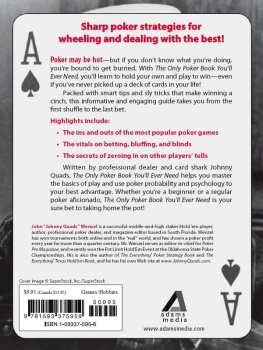

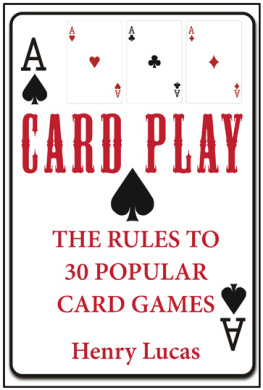

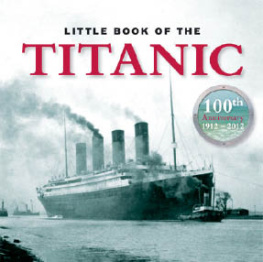


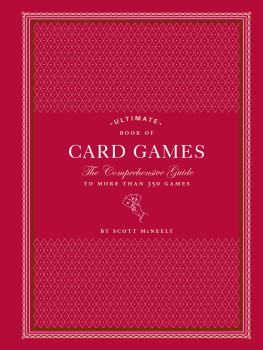
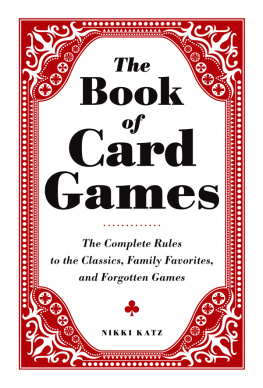

 (Spades),
(Spades),  (Hearts),
(Hearts),  (Diamonds) and
(Diamonds) and  (Clubs). The names have no significance; they are merely a form of shorthand for descriptive purposes. After all, it is easier to say, I have two hearts in my hand, than, I have two of those red cards with heart-shaped symbols on them.
(Clubs). The names have no significance; they are merely a form of shorthand for descriptive purposes. After all, it is easier to say, I have two hearts in my hand, than, I have two of those red cards with heart-shaped symbols on them.